Texas Flying Legends Museum
by Chuck Cravens
Texas Flying Legend’s Museum: Honoring Our Past–Inspiring the Future.
Stefan, of our Aeroscan division, scans inside the fuselage.
Update
This month marked the end of the repairs conducted at the AirCorps Aviation restoration shop. The repaired Zero tail section was sent to Tri-State Aviation in Wahpeton, North Dakota, for reconnecting to the rest of the airframe and preparing all the systems for flight. It will be flown to Custom Aircraft Refinishing in Casselton, North Dakota for a new paint job that will incorporate some enhanced historical accuracy.
The work this past month was finishing up the fuselage skin, forming empennage fairings, finishing and covering the elevators and rudder, and building a new tail cone. In this case, tail cone refers to just the very aft portion of the fuselage behind the elevator hinge line. Tail hook and tail wheel parts finished up the month.
Final Fuselage Skin Sections







Fairings
On the Zero, fairings between the fuselage and the horizontal and vertical stabilizers have some of the most complex, difficult to form curves of any metal aircraft. They constitute a small percentage of the overall skin area, but take up a significantly larger percentage of the time required to finish the skinning task.











Elevator and Rudder











Tail Cone
On many warbirds, the tail cone refers to the whole rear section of the fuselage from a station ahead of the empennage to the rear of the airframe. For the purposes of this update, we will be referring to just that last section behind the elevator hinge line.





Some Final Parts
As in any restoration, there are a few final pieces that go on last.






Some of the AirCorps crew and Ryan Toews will head over to Casselton to consult on placement of the Japanese labeling, letteringand other paint scheme details when the painting begins. It won’t be too long until she is resplendent in a new paint job.
We hope to see her flying soon!
